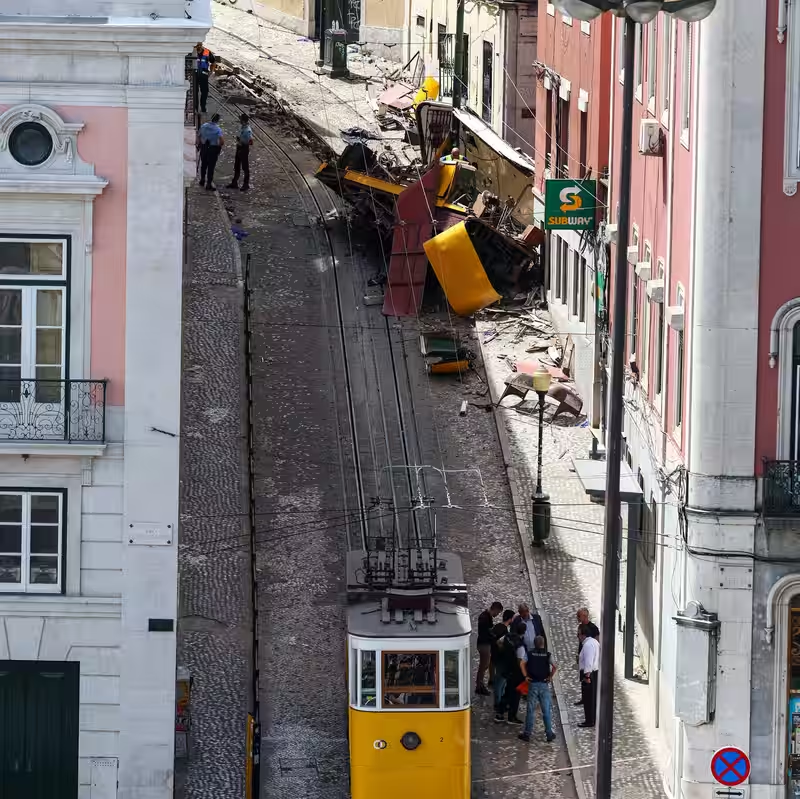Table of Contents
- What Happened in Lisbon?
- The Fatal Cable That Wasn’t Certified
- Braking System Failed When It Mattered Most
- 20 Years of Outsourced, Inadequate Maintenance
- Political Fallout Amid Re-Election
- What Happens Next?
- Sources
What Happened in Lisbon?
On a quiet afternoon last month in the historic heart of Lisbon, tragedy struck when a century-old funicular car—beloved by tourists and locals alike—plummeted down a steep hill after its cable snapped. The crash killed 16 people and left more than 20 injured, sending shockwaves across Portugal and raising urgent questions about public transport safety.
Now, a preliminary report released by Portugal’s Office for the Prevention and Investigation of Accidents in Civil Aviation and Rail has revealed disturbing details: the funicular was operating with a cable never certified for passenger transport.
The Fatal Cable That Wasn’t Certified
According to investigators, the steel cable that failed was not approved for use in public transportation systems. Shockingly, this same type of non-compliant cable had been used on this funicular—and another in the city—for years without incident.
“It is not currently possible to determine whether the cable’s noncompliance is or is not relevant to the accident,” the report states. However, it confirmed the rupture occurred at the point where the cable attached to the carriage—precisely when the vehicle was at the top of its route.
Once detached, the car accelerated unchecked for 20 seconds, reaching speeds up to 30 mph before slamming into sidewalks and buildings below.
Braking System Failed When It Mattered Most
Perhaps even more alarming: the emergency braking system didn’t work.
The report notes there was no record of any test being conducted on the emergency brake in the event of a cable failure. “The safety of the system depended entirely on the cable,” investigators concluded—a single point of failure with catastrophic consequences.
20 Years of Outsourced, Inadequate Maintenance
Responsibility for maintenance had been outsourced by Carris, Lisbon’s public transport operator, to private firms for two decades. The current contractor, MNTC—hired in 2019—was found lacking in both expertise and resources.
“MNTC lacks the necessary engineering team with specialized technical knowledge of funicular systems,” the report said, adding that the company failed to adapt maintenance protocols to real-world operational demands.
Investigators also flagged suspicious inconsistencies in inspector timesheets, casting doubt on whether maintenance was even performed on the day of the crash—though the cable wasn’t scheduled for inspection that day anyway.
Political Fallout Amid Re-Election
The disaster quickly became a flashpoint in Lisbon’s mayoral race. Opponents of Mayor Carlos Moedas accused his administration of prioritizing tourism and business over public safety.
Moedas, who won re-election this month, dismissed the politicization as “disgusting” and pointed to the preliminary findings as evidence the crash was rooted in technical—not political—failures.
“This was not about ideology,” he said Monday night. “It was about engineering, oversight, and certification.”
What Happens Next?
All of Lisbon’s funiculars remain shut down indefinitely. The report recommends they stay closed until full safety audits are completed.
A final, comprehensive investigation is expected by September 2026. Until then, families of the victims, city officials, and transport experts await answers—and accountability.
Sources
The New York Times: Cable Used in Deadly Funicular Crash in Lisbon Not Cleared for Public Transport




